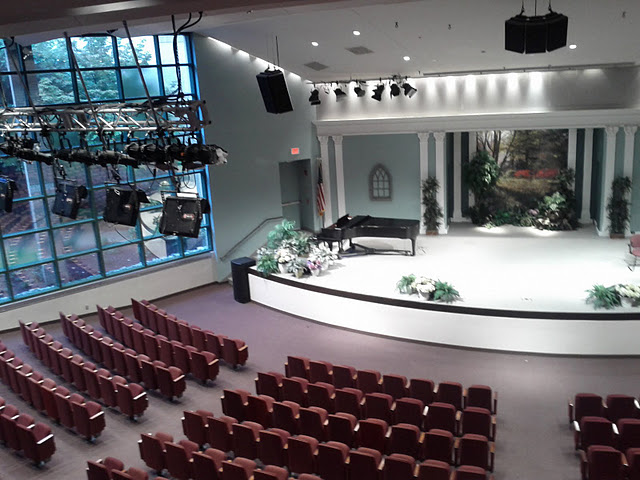|
J. N. Andrews
John Nevins Andrews (July 22, 1829 – October 21, 1883) was a Seventh-day Adventist minister, the first official Seventh-day Adventist missionary, writer, editor, and scholar. Andrews University (Michigan, USA), a university owned and operated by the Seventh-day Adventist church, is named after him. Biography Born in Poland, Maine in 1829, Andrews became a Millerite in February 1843 and began to observe the seventh-day Sabbath in 1845. He met James White and Ellen G. White in September 1849. Later, the Whites boarded with the Andrews family. In 1850 he began itinerant pastoral ministry in New England, and he was ordained in 1853. Andrews played a pivotal role in the establishment of Adventist theology. Among his more memorable achievements in Adventist prophetic interpretation, was developing the connection between the two-horned beast of Revelation as the United States of America. On October 29, 1856, Andrews married Angeline Stevens (1824–1872) in Waukon, Iowa, where the ... [...More Info...] [...Related Items...] OR: [Wikipedia] [Google] [Baidu] |
Poland, Maine
Poland is a town in Androscoggin County, Maine, United States. The population was 5,906 at the 2020 census. Set among rolling hills and numerous lakes, the town is home to Range Ponds State Park, which includes hiking trails and a pristine freshwater beach. Poland is also a historic resort area. It is included in the Lewiston- Auburn, Maine metropolitan statistical area, which itself is part of the Greater Portland- Lewiston Combined Statistical Area. History Land was granted by the Massachusetts General Court in 1765 to officers and soldiers who served with Sir William Phips in the 1690 Battle of Quebec. It replaced a 1736 grant made to them called Bakerstown (now Salisbury, New Hampshire) which was ruled invalid in 1741 at the separation of New Hampshire from Massachusetts. The new plantation was also called Bakerstown (after Captain Thomas Baker), and included present-day Poland, Minot, Mechanic Falls and the greater part of Auburn. Settled in 1767 by Nathaniel Bailey ... [...More Info...] [...Related Items...] OR: [Wikipedia] [Google] [Baidu] |
Adventist Missionaries
The General Conference Corporation of Seventh-day Adventists is the governing organization of the Seventh-day Adventist Church. Its headquarters is located in Silver Spring, Maryland and oversees the church in directing its various divisions and leadership, as well as doctrinal matters. The General Conference, which is overseen by an executive committee and an elected President of the General Conference, is the administrative head of the global church. The denomination is organized in a representative form of church government, which means authority arises from the membership of local churches. In addition to administering their own congregations, churches send representatives to vote on matters and leaders in a shared local unit of administration. They vote also on who will represent them in a large area, with further representation selected at each successively larger administrative region. Finally, the General Conference elects the executive committee and officers who hold i ... [...More Info...] [...Related Items...] OR: [Wikipedia] [Google] [Baidu] |
28 Fundamental Beliefs
The Seventh-day Adventist Church is an Adventist Protestant Christian denomination which is distinguished by its observance of Saturday, the seventh day of the week in the Christian (Gregorian) and the Hebrew calendar, as the Sabbath, and its emphasis on the imminent Second Coming (advent) of Jesus Christ. The denomination grew out of the Millerite movement in the United States during the mid-19th century and it was formally established in 1863. Among its co-founders was Ellen G. White, whose extensive writings are still held in high regard by the church. Much of the theology of the Seventh-day Adventist Church corresponds to common evangelical Christian teachings, such as the Trinity and the infallibility of Scripture. Distinctive post-tribulation teachings include the unconscious state of the dead and the doctrine of an investigative judgment. The church places an emphasis on diet and health, including adhering to Kosher food laws, advocating vegetarianism, and its holi ... [...More Info...] [...Related Items...] OR: [Wikipedia] [Google] [Baidu] |
History Of The Seventh-day Adventist Church
The Seventh-day Adventist Church had its roots in the Millerite movement of the 1830s to the 1840s, during the period of the Second Great Awakening, and was officially founded in 1863. Prominent figures in the early church included Hiram Edson, Ellen G. White, her husband James Springer White, Joseph Bates, and J. N. Andrews. Over the ensuing decades the church expanded from its original base in New England to become an international organization. Significant developments such the reviews initiated by evangelicals Donald Barnhouse and Walter Martin, in the 20th century led to its recognition as a Christian denomination. Foundations, 1798–1820s The Second Great Awakening, a revival movement in the United States, took place in the early 19th century. The Second Great Awakening was stimulated by the foundation of the many Bible Societies which sought to address the problem of a lack of affordable Bibles. The spread of Bibles allowed many who had not had one to be able to ... [...More Info...] [...Related Items...] OR: [Wikipedia] [Google] [Baidu] |
Annie R
Annie may refer to: People and fictional characters * Annie (given name), a given name and a list of people and fictional characters with the name * Annie (actress) (born 1975), Indian actress * Annie (singer) (born 1977), Norwegian singer Theatre and film * ''Annie'' (musical), a 1977 musical ** ''Annie'' (1982 film) *** ''Annie'' (1982 film soundtrack) *** '' Annie: A Royal Adventure!'', a 1995 telefilm sequel ** ''Annie'' (1999 film) *** ''Annie'' (1999 film soundtrack) ** ''Annie'' (2014 film) *** ''Annie'' (2014 film soundtrack) * ''Annie'' (1976 film), a British-Italian film Music * ''Annie'' (Anne Murray album) (1972) * "Annie" (song), a 1999 song by Our Lady Peace * "Annie", a song by SafetySuit * "Annie", a song by Pete Townshend from ''Rough Mix'' * "Annie", a 1972 song by Sutherland Brothers * "Annie", a 1995 song by Elastica from the album ''Elastica'' Other uses * Cyclone Annie (other) * ''Annie'' (locomotive) * ''Annie'' (sloop), a ship bu ... [...More Info...] [...Related Items...] OR: [Wikipedia] [Google] [Baidu] |
Seventh-day Adventist Worship
The Seventh-day Adventist Church is an Adventist Protestant Christian denomination which is distinguished by its observance of Saturday, the seventh day of the week in the Christian (Gregorian) and the Hebrew calendar, as the Sabbath, and its emphasis on the imminent Second Coming (advent) of Jesus Christ. The denomination grew out of the Millerite movement in the United States during the mid-19th century and it was formally established in 1863. Among its co-founders was Ellen G. White, whose extensive writings are still held in high regard by the church. Much of the theology of the Seventh-day Adventist Church corresponds to common evangelical Christian teachings, such as the Trinity and the infallibility of Scripture. Distinctive post-tribulation teachings include the unconscious state of the dead and the doctrine of an investigative judgment. The church places an emphasis on diet and health, including adhering to Kosher food laws, advocating vegetarianism, and i ... [...More Info...] [...Related Items...] OR: [Wikipedia] [Google] [Baidu] |
Seventh-day Adventist Theology
The theology of the Seventh-day Adventist Church resembles that of Protestant Christianity, combining elements from Lutheran, Wesleyan-Arminian, and Anabaptist branches of Protestantism. Adventists believe in the infallibility of Scripture and teach that salvation comes from grace through faith in Jesus Christ. The 28 fundamental beliefs constitute the church's official doctrinal position. There are many teachings held exclusively by Seventh-day Adventists. Some distinctive doctrines of the Seventh-Day Adventist church which differentiate it from other Christian churches include: the perpetuity of the seventh-day Sabbath, the unconsciousness of man in death, conditional immortality, an atoning ministry of Jesus Christ in the heavenly sanctuary, and an “ investigative judgment” that commenced in 1844. Furthermore, a traditionally historicist approach to prophecy has led Adventists to develop a unique system of eschatological beliefs which incorporates a commandment-keepi ... [...More Info...] [...Related Items...] OR: [Wikipedia] [Google] [Baidu] |
Seventh-day Adventist Eschatology
The Seventh-day Adventist Church holds a unique system of eschatological (or end-times) beliefs. Adventist eschatology, which is based on a historicist interpretation of prophecy, is characterised principally by the premillennial Second Coming of Christ. Traditionally, the church has taught that the Second Coming will be preceded by a global crisis with the Sabbath as a central issue . At Jesus' return, the righteous will be taken to heaven for one thousand years. After the millennium the unsaved cease to exist as they will be punished by annihilation while the saved will live on a recreated Earth for eternity. The foremost sources are the biblical books of Daniel and Revelation. Jesus' statements in Matthew 24 for instance, as well as many other Bible verses are also used. The classic Adventist commentary on the end-times was Uriah Smith'''Daniel and the Revelation'' The writings of Ellen G. White have also been highly influential, particularly the last part of her book ' ... [...More Info...] [...Related Items...] OR: [Wikipedia] [Google] [Baidu] |
Seventh-day Adventist Church Pioneers
The Seventh-day Adventist Church pioneers were members of Seventh-day Adventist Church, part of the group of Millerites, who came together after the Great Disappointment across the United States and formed the Seventh-day Adventist Church. In 1860, the pioneers of the fledgling movement settled on the name, ''Seventh-day Adventist'', representative of the church's distinguishing beliefs. Three years later, on May 21, 1863, the General Conference of Seventh-day Adventists was formed and the movement became an official organization. Overview The Seventh-day Adventist Church had its roots in the Millerite movement of the 1830s and 1840s, during the period of the Second Great Awakening, and was officially founded in 1863. Prominent figures in the early church included Hiram Edson, James Springer White and his wife Ellen G. White, Joseph Bates, and J. N. Andrews. Many of the Adventist pioneers first began their work when they were teenagers. When the Seventh-day Adventist Chur ... [...More Info...] [...Related Items...] OR: [Wikipedia] [Google] [Baidu] |
Adventist Health Studies
Adventist Health Studies (AHS) is a series of long-term medical research projects of Loma Linda University with the intent to measure the link between lifestyle, diet, disease and mortality of Seventh-day Adventists. Seventh-day Adventists have a lower risk than other Americans of certain diseases, and many researchers hypothesize that this is due to dietary and other lifestyle habits. This provides a special opportunity to answer scientific questions about how diet and other health habits affect the risk of suffering from many chronic diseases. Two studies on Adventist health involving 24,000 and 34,000 Californian Adventists were conducted over the last 40 years. Although not sponsored by the Adventist church itself, the church is supportive of the studies. These studies have been the subject of significant national media coverage on programs such as '' ABC News: World News Tonight'', '' Good Morning America'' and in the '' National Geographic'' feature article "Longevity: Th ... [...More Info...] [...Related Items...] OR: [Wikipedia] [Google] [Baidu] |
Adventism
Adventism is a branch of Protestant Christianity that believes in the imminent Second Coming (or the "Second Advent") of Jesus Christ. It originated in the 1830s in the United States during the Second Great Awakening when Baptist preacher William Miller first publicly shared his belief that the Second Coming would occur at some point between 1843 and 1844. His followers became known as Millerites. After Miller's prophecies failed, the Millerite movement split up and was continued by a number of groups that held different doctrines from one another. These groups, stemming from a common Millerite ancestor, became known collectively as the Adventist movement. Although the Adventist churches hold much in common with mainline Christianity, their theologies differ on whether the intermediate state of the dead is unconscious sleep or consciousness, whether the ultimate punishment of the wicked is annihilation or eternal torment, the nature of immortality, whether the wicked are ... [...More Info...] [...Related Items...] OR: [Wikipedia] [Google] [Baidu] |
General Conference Of Seventh-day Adventists
The General Conference Corporation of Seventh-day Adventists is the governing organization of the Seventh-day Adventist Church. Its headquarters is located in Silver Spring, Maryland and oversees the church in directing its various divisions and leadership, as well as doctrinal matters. The General Conference, which is overseen by an executive committee and an elected President of the General Conference, is the administrative head of the global church. The denomination is organized in a representative form of church government, which means authority arises from the membership of local churches. In addition to administering their own congregations, churches send representatives to vote on matters and leaders in a shared local unit of administration. They vote also on who will represent them in a large area, with further representation selected at each successively larger administrative region. Finally, the General Conference elects the executive committee and officers who hold it ... [...More Info...] [...Related Items...] OR: [Wikipedia] [Google] [Baidu] |





